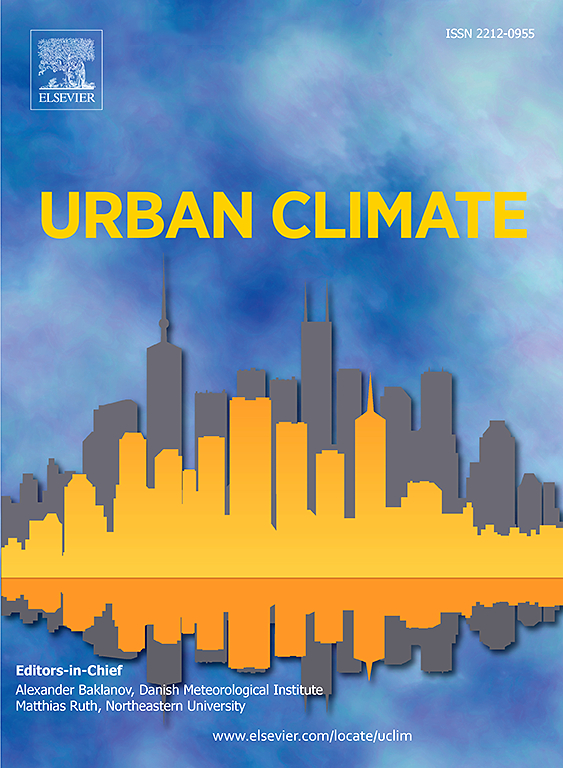The independent and joint effects of meteorological factors on influenza: A nationwide time series study in China
IF 6
2区 工程技术
Q1 ENVIRONMENTAL SCIENCES
引用次数: 0
Abstract
Background
Although many studies have examined the effects of temperature or humidity on influenza, few studies investigated other meteorological factors, let alone their joint effects. This study aimed to investigate the joint effects of meteorological factors on influenza in China and identified main factors contributing to the joint effect.
Methods
Influenza cases data during 2015–2019 in 324 prefectures of China were collected from the Chinese Center for Disease Control and Prevention. Meteorological data were obtained from the Land-ERA5 dataset of the European Centre for Medium-Range Weather Forecasts. We adopted a two-stage analysis strategy. In the first stage, distributed hysteresis nonlinear model (DLNM) was used to study the exposure response relationship between temperature, relative humidity, wind speed, and atmospheric pressure and influenza, and in the second stage, meta-analysis was used to obtain the exposure response relationship at the national level. Then, a quantile g-computation (qgcomp) model was employed to assess the joint effects of mixture exposure to the four meteorological factors on influenza.
Results
There were 5,093,710 influenza cases included in the study. There were U-shaped relationships between temperature, relative humidity, atmospheric pressure and influenza, while wind speed showed a negative effect on influenza. It was also a U-shaped association of mixture exposure to all the four meteorological factors with influenza. The highest risk was observed at the fourth quantile of the mixture exposure (RR 1.21; 95 % CI[1.11–1.32]) in total population, and temperature was the most important contributor (54.15 %) to the joint effect, followed by atmospheric pressure (24.46 %), wind speed (16.52 %) and relative humidity (4.87 %).
Conclusion
The study found that mixture exposure to meteorological factors associated with influenza, and temperature contributed most to the combined effect.
气象因子对流感的独立和联合影响:中国全国范围内的时间序列研究
虽然许多研究已经调查了温度或湿度对流感的影响,但很少有研究调查其他气象因素,更不用说它们的共同影响了。本研究旨在探讨气象因素对中国流感的联合效应,并确定影响联合效应的主要因素。方法收集中国疾病预防控制中心2015-2019年全国324个地市流感病例数据。气象数据来自欧洲中期天气预报中心的Land-ERA5数据集。我们采用了两阶段分析策略。第一阶段采用分布式迟滞非线性模型(DLNM)研究温度、相对湿度、风速、气压与流感的暴露响应关系,第二阶段采用meta分析得到国家层面的暴露响应关系。然后,采用分位数g计算(qgcomp)模型评估四种气象因子混合暴露对流感的联合影响。结果共有5093710例流感病例纳入研究。气温、相对湿度、气压与流感呈u型关系,风速对流感呈负向关系。同时暴露于所有四种气象因素与流感呈u型关系。在混合暴露的第四个分位数处观察到最高的风险(RR 1.21;(95% CI[1.11 ~ 1.32]),温度对联合效应的影响最大(54.15%),其次是气压(24.46%)、风速(16.52%)和相对湿度(4.87%)。结论流感相关气象因素的混合暴露和温度对流感的综合影响最大。
本文章由计算机程序翻译,如有差异,请以英文原文为准。
求助全文
约1分钟内获得全文
求助全文
来源期刊

Urban Climate
Social Sciences-Urban Studies
CiteScore
9.70
自引率
9.40%
发文量
286
期刊介绍:
Urban Climate serves the scientific and decision making communities with the publication of research on theory, science and applications relevant to understanding urban climatic conditions and change in relation to their geography and to demographic, socioeconomic, institutional, technological and environmental dynamics and global change. Targeted towards both disciplinary and interdisciplinary audiences, this journal publishes original research papers, comprehensive review articles, book reviews, and short communications on topics including, but not limited to, the following:
Urban meteorology and climate[...]
Urban environmental pollution[...]
Adaptation to global change[...]
Urban economic and social issues[...]
Research Approaches[...]
 求助内容:
求助内容: 应助结果提醒方式:
应助结果提醒方式:


